Ah, the lure of the Dark Carnival.
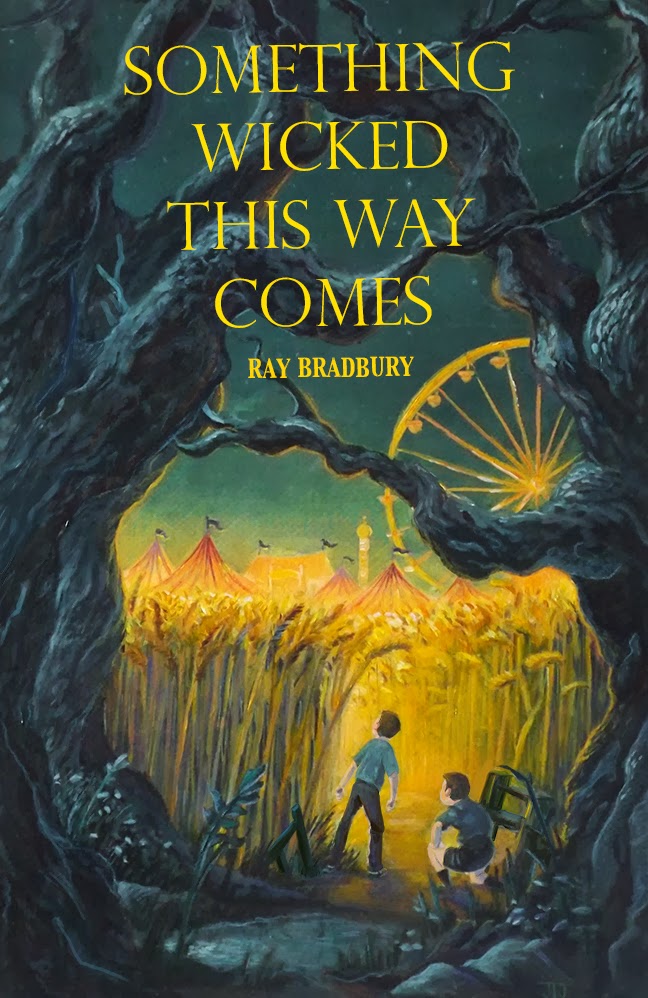
As one who deeply loves Ray Bradbury’s Something Wicked This Way Comes, how could I NOT be fascinated by the trailer to Guillermo del Toro’s latest film? The combination of carnival lights and period noir ignited something electric, something…unnatural, yet all too true to the darker corners of human nature.
I found the graphic novel, the original novel, and even the Tyrone Power adaptation from the 1940s before treating myself to the new cinematic adaptation of Nightmare Alley last week. (Babysitters are damned hard to come by these days, and Bo got to see Halloween Kills by himself in November. My turn!)
For those curious about the premise of Nightmare Alley, here’s a blurb:
Nightmare Alley begins with an extraordinary description of a carnival-show geek—alcoholic and abject and the object of the voyeuristic crowd’s gleeful disgust and derision—going about his work at a county fair. Young Stan Carlisle is working as a carny, and he wonders how a man could fall so low. There’s no way in hell, he vows, that anything like that will ever happen to him.
And since Stan is clever and ambitious and not without a useful streak of ruthlessness, soon enough he’s going places. Onstage he plays the mentalist with a cute assistant (before long his harried wife), then he graduates to full-blown spiritualist, catering to the needs of the rich and gullible in their well-upholstered homes. It looks like the world is Stan’s for the taking. At least for now.
Published in 1946, Nightmare Alley was adapted into film the following year and put author William Lindsay Gresham on the literary map…for a while, anyway. This novel was his only popular publication, and in the early 1960s Gresham took his own life by overdosing on medication. In looking at his brief biography on Wikipedia, I notice a parallel between his life and Nightmare Alley’s protagonist, Stanton Carlisle: both seeking community and purpose, only to judge all as a con afterward. Carnivals are full of deception–of course they are. But so is show business, so is psychology, so is religion, so is the amber drink of the bottle and the counselors who are supposed to break you free from the bottle so why even bother leaving the bottle at all…
All give false comfort. All deceive with the most dangerous power of all:
Hope.

A powerful thing, Hope. It has the ability to drive out despair, grief, and anger. It has the ability to ignite empathy, love, and trust. Countries rise and fall upon the revolutions spurred on by Hope. Religions millennia old root themselves in Hope.
Hope brings many to the Ten-in-One show. Be it Molly, the Mamzelle Electra; Zeena and Pete, a pair of mentalists who wowed crowds until Pete took to drink; or Stanton Carlisle, a young man determined to make himself in a world of marks and saps.
The crowd was coming out of the geek show, gray and listless and silent except for the drunk. Stan watched them with a strange, sweet, faraway smile on his face. It was the smile of a prisoner who has found a file in a pie.
We’ll return to that geek show in a moment. First I want to highlight a specific exchange between Zeena and Stan in the third chapter, for much of Stan’s story ties back to these words:

“I’ve always stuck to the mental business. It don’t hurt anybody–makes plenty of friends for you wherever you go. Folks are always crazy to have their fortunes told, and what the hell–You cheer’em up, give’em something to wish and hope for. That’s all the preacher does every Sunday. Not much different, being a fortuneteller and a preacher, way I look at it. Everybody hopes for the best and fears for the worst and the worst is generally what happens but that don’t stop us from hoping. When you stop hoping you’re in a bad way.”
Stan nodded. “Has Pete stopped hoping?”
Zeena was silent and her childish blue eyes were bright. “Sometimes I think he has. Pete’s scared of something–I think he got good and scared of himself a long time ago. That’s what made him such a wiz as a crystal-reader–for a few years. He wished like all get out that he really could read the future in the ball. And when he was up there in front of them he really believed he was doing it. And then all of a sudden he began to see that there wasn’t no magic anywhere to lean on and he had nobody to lean on in the end but himself–not me, not his friends, not Lady Luck–just himself.”
Perhaps it is Zeena’s final note on self-dependence that prevents Stan from taking Zeena’s words to heart; there are multiple flashbacks to Stan’s childhood in the novel, where his mother’s deceit and father’s abuse taught him that everyone lies and no one is worth real trust. But readers cannot help but absorb Zeena’s other lessons: that everyone is looking for hope and will take it wherever they can get it. That believing one’s own hustle will only lead to a dark place of liquor and hopelessness, and when hopelessness sets in, all is over.
But at this early point in the story, Stan’s not worried about hopelessness, hope, or anything else. Money’s all that matters to him, and he sees the money to be made in the carnival acts. Even The Geek–a person who bites the heads off of chickens and drinks their blood–is a major draw. When he questions Clem, the manager of the Ten-in-One, about where a Geek is found, Clem explains a Geek is “made” by exploiting an alcoholic’s desperation for drink.
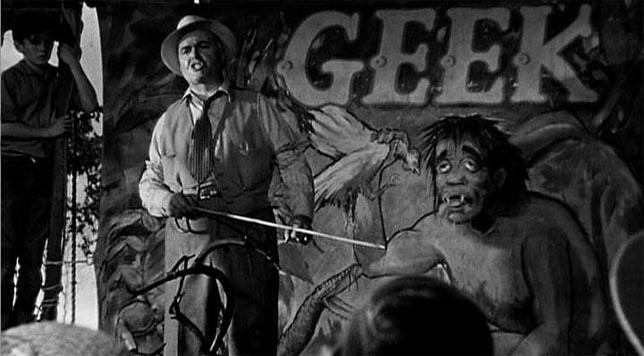
“So you tell him like this: ‘I got a little job for you. It’s a temporary job. We got to get a new geek. So until we do you’ll put on the geek outfit and fake it.’…[After a week] you say, ‘Well, I got to get me a real geek. Out you go’…[And] you drag out the lecture and lay it on thick. All the while you’re talking he’s thinking about sobering up and getting the crawling shakes. You give him time to think it over, while you’re talking. Then throw in the chicken. He’ll geek.”
Remember this.
Stan first maneuvers himself in to help Zeena and Pete with their mentalist act, slowly asking for tips and tricks about cold reading people. He picks it up quickly, so quickly he’s able to talk down a sheriff and his raiding officers from shutting down the carnival. Through seducing Zeena and poisoning Pete, Stan gets a hold of the codebook for their mentalist act and then seduces young Molly to come with him as his partner in the nightclub circuit. A few years of this, though, make Stan hungry for more, and he shifts into spiritualism with a fake ordination certificate from a church correspondence school.
Both film adaptations skip the preacher portion of Stan’s series of cons. From a storytelling perspective, I do not blame them. Initially, I thought this was because Religion is too important to too many potential movie ticket-buyers to be included in the films, but I can see now that removing the “preacher” phase of Stan’s evolution tightens up the narrative so we can get to Stan’s next con: applying his “mentalist” powers to “help” the wealthy communicate with their dead loved ones.

Molly hates this shift away from their stage show, feeling it too deceitful and mean to play on people’s grief. But Stan will not listen.
I’ve met half a dozen spook workers in the past year and they’re hustlers, every one of them. I tell you, it’s just show business. The crowd believes…isn’t it better to give them something to hope for?
Stan successfully persuades Molly to play along, promising her a happy marriage and child one day while threatening her with exposure as a fraud the next. For a while, Molly deceives herself that Stan is just struggling with the pressure of the business, that their relationship will go back to its happier days soon. She bets her hopes on a future where Stan will stop trying to one-up his own game.
And that is her mistake, for Stan has already chosen to bet on the power of another woman to help him.
Ooooh, psychologist Dr. Lilith Ritter is slick. Slicker than Stan, I’d say. She attempts to out his “mentalist” con while he’s performing, and when that fails, invites him for a consultation where she quickly sums up his sleepless, nervous character.
Dr. Lilith Ritter was regarding him from across a wide mahogany desk. She went on, “I thought I’d be hearing from you, Carlisle. You were never cut out to run a spook racket solo.”
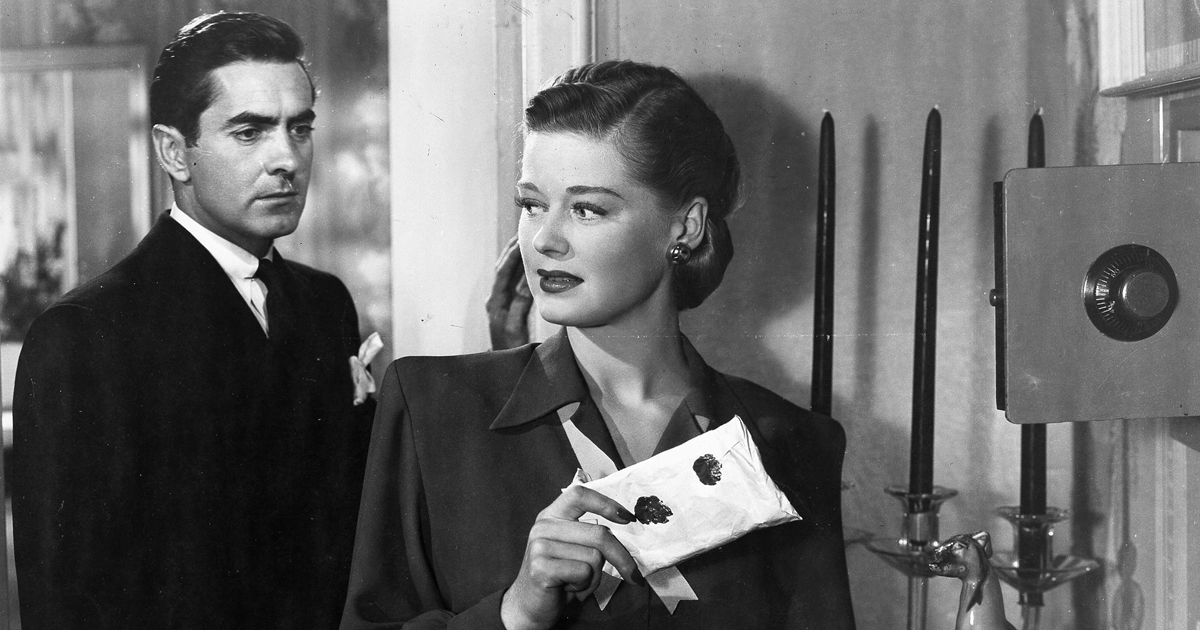
Stan, so bloody sure of himself, is certain he can use Dr. Ritter’s connections with the upper echelons of the city to get enough clients–and dirt on their pasts–to keep the “spook racket” going until he’s cleaned out the lot. He believes his own hustle so much, he never once considers Ritter to have her own con at play.
Whether you want to go with the del Toro’s adaptation of Ritter using Stan to get back at the wealthy Mr. Grindle who scarred her, or Gresham’s novel version of Ritter using her sexual appeal and domination to con Stan into deceiving Grindle so that she could “heal” the man with therapy and then marry him and his wealth…there are just so many ways to interpret this character that I cannot fit into this post. Honestly, no character in this story, be it film or book, is dull. In all the adaptations, though, it is Ritter who toys with Stan’s body and mind, breaking his alcohol abstinence and drawing out Stan’s confession of murdering Pete.

A stubborn thing, Hope. Stan so badly wants to prove the world’s nothing but marks and saps that he can shake down to his heart’s content. He’s sure no dame would be stupid enough to go against him. He even starts feeling he can handle the liquor AND take on the powerful Grindle for all he’s got thanks to Ritter’s information.
But the con falls apart. Grindle sees through the facade Stan puts on Molly to make her appear as the ghost of Grindle’s past lover. Grindle vows revenge at any cost. Molly flees on her own while Stan runs to Ritter for money and help…only for Dr. Ritter to act as if she has no clue what he’s talking about. He’s suffering delusions, she’s been nothing more than his therapist for months, it’s time he be committed for his own sake, she of course only wants what’s best for him.
Instead, Stan runs. And drinks. And runs some more. He’s soon one more bum among the others in a nameless camp, lost in alcohol with the shadow of Grindle eternally on his heels and in his nightmares.
~*~
A deceitful thing, Hope. It can make us see what we want to see. Back in the early days of the carnival, Pete tries to help Stan understand the role of Hope’s Deceit in cold reading people:
(and I do wish I could share this whole scene because the prose is so bloody brilliant, but I’ll do my best to condense it for you here)
“…Then I jump right into the reading. Here’s m’crystal.” He focused his eyes on the empty whisky bottle and Stan watched him with an uneasy twinge. Pete seemed to be coming alive. His eyes became hot and intent.
“…through the ages certain men have gazed into the polished crystal and seen…Slowly, shifting their form, visions come…”
Stan found himself watching the empty bottle in which a single pale drop slanted across the bottom. He could not take his eyes away, so contagious was the other’s absorption.
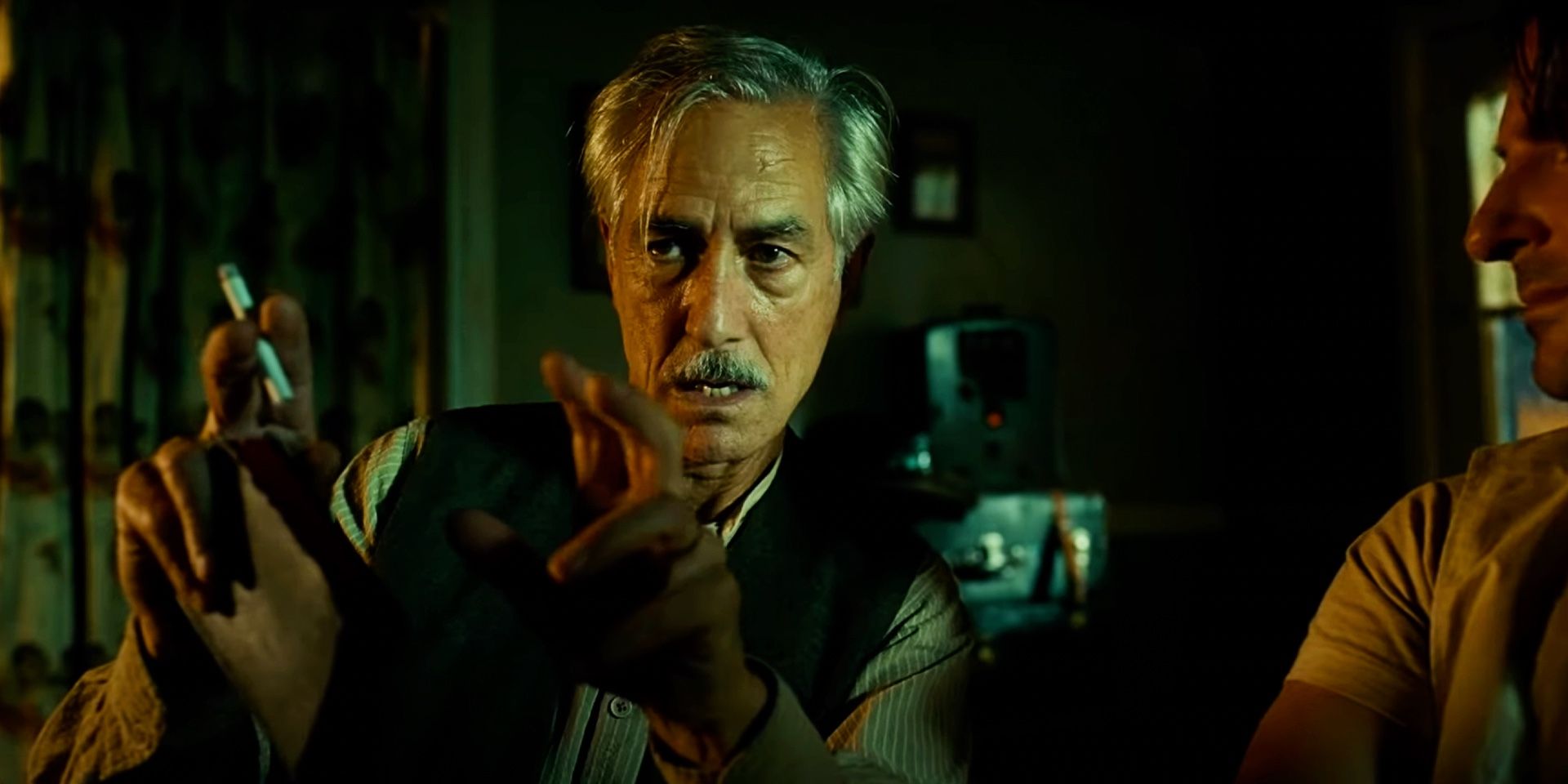
…Pete’s eyes burned down into the glass. “…A boy is running on bare feet through the fields. A dog is with him…Happiness then…but for a little while. Now dark mists…sorrow. I see people moving…one man stands out…evil…the boy hates him. Death and the wish of death.”
Stan moved like an explosion. He snatched for the bottle; it slipped and fell to the ground. He kicked it into a corner, his breath coming quick and rapid.
[Pete] crumpled into the folding chair…”didn’t mean nothing, boy…Stock reading–fits everybody. Only you got to dress it up…Everybody had some trouble. Somebody they wanted to kill. Usually for a boy it’s the old man. What’s childhood? Happy one minute, heartbroken the next. Every boy had a dog. Or neighbor’s dog…Just old drunk. Just lush. Lord…Zeena be mad.”
Again, Stan doesn’t listen.
Or perhaps he does, wrongly. He could not deny Pete’s power in that moment of clarity with the empty bottle. He felt the draw of Hope that one could really see the past, see the future. He knew what Pete was doing, but in that moment of Pete’s crystal-gazing, Stan did not care. And that is the power Stan wants to hold over others for his own gain.
How can such a soul find redemption?
Let us fast-forward to the end now, and see for ourselves.
The movies don’t bother with something that Gresham writes next, and it’s a pity. It’s one last deceitful hope–this time by Gresham on us.
Stan spots an ad in a newspaper for Zeena’s horoscopes and bums rides to the address. There he finds Zeena making a living off of horoscopes for newspapers and some other subscription services. She cleans Stan up and offers him help to find another carnival until Grindle’s hunt dies down. During his stay, Stan has stopped drinking and is even working on developing a new mentalist alias.
Perhaps this really is a new beginning! we readers think.
And then we see Stan stealing from Zeena’s earnings before she gives him money for the bus.
He hasn’t learned.
Not at all.
By the time Stan arrives at the new carnival, he is completely soused. The manager McGraw wants nothing to do with him…at first.

In the office trailer McGraw was typing out a letter when he heard a tap on the screen door…The bum was hatless, shirt filthy. “Allow me t’introduce myself–Allah Rahged, top-money mitt reader. Best cold reader in the country.”
McGraw took the cigar out of his mouth. “Sorry, brother, I’m full up…I don’t like a mitt camp. Too much trouble with the law.”
The bum was eyeing the bottle, his red eyes fastened on it…”Hey, mister, how ’bout [a] li’l shot ‘fore I go?”
“Yeah, sure. But I just happened to think of something. I got one job you might take a crack at. It ain’t much, and I ain’t begging you to take it; but it’s a job. Keep you in coffee and cakes and a shot now and then. What do you say? Of course, it’s only temporary–just until we get a real geek.”

What. An. ENDING. In terms of prose, in terms of narrative arc, in terms of twist.
But unlike the book and del Toro version, Tyrone Power’s 1947 adaptation chooses to take the audience past this moment of Stanton becoming the Geek–
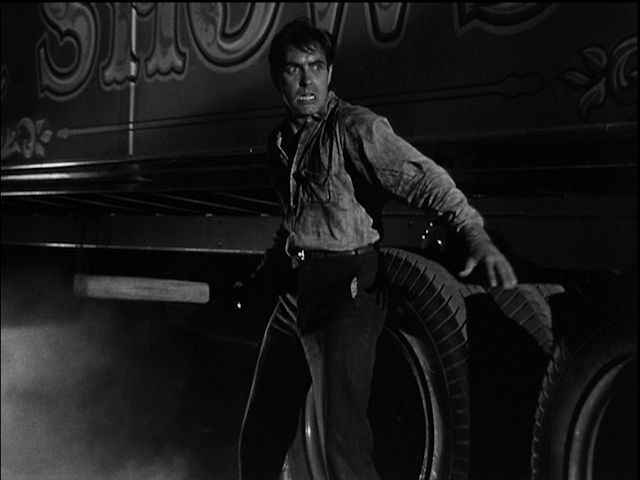
–and down the redemption route.
Oh look, Molly is at this carnival as well, and oh look, Molly sees Stan is the new Geek, and oh look, Molly can get through to Stan and the power of love will help Stan heal and there IS hope after all! Hope can be found in Love!
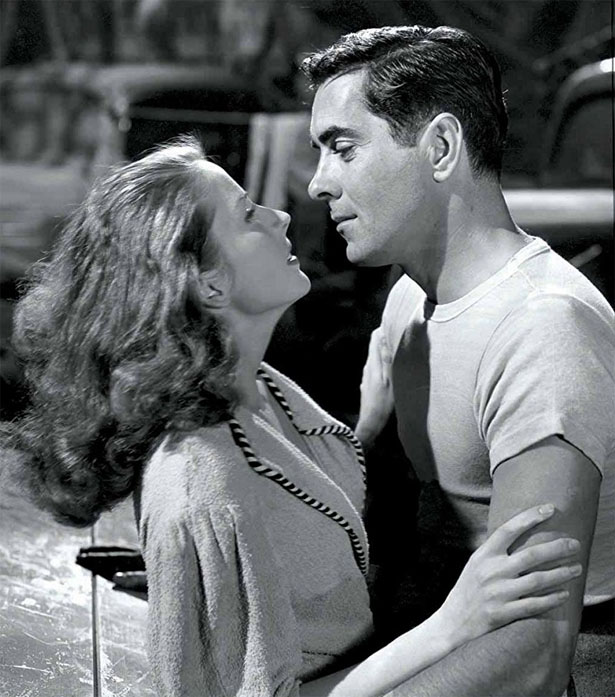
We even get a little moral of the story from the bystanders watching Stan and Molly embrace: “How can a guy get so low?” one asks. Another answers: “He reached too high.”
Aw, isn’t that sweet? If the worst of us, like Stanton Carlisle, can be redeemed, then maybe we can be redeemed, too.
This, my fellow creatives, is the REAL Spook Show. This ending, right here, is a narrative deceitful hope, and it will not hold up.
A man who has seduced, killed, and constantly swindled isn’t going to magically sober up in the last two minutes and be back in love with the girl he was willing to dump for the dominatrix psychiatrist. Even del Toro doesn’t go this route for Stanton Carlisle in the new movie, for he knows that in a tale like Nightmare Alley, there is no hope for such a man. Clues throughout his movie (as well as Gresham’s novel) make it clear to us that Stan is not a soul that can be saved.

You cannot apply glowing paint to a picture of a heart, dim the lights, pump sounds of heartbeats in through hidden speakers, and tell us that’s a real heart. We know the hustle too well by now.
Any story that pulls such a con will always feel hollow at its end, the deceit a taint upon whatever true strengths in narrative the story shared. Do not build the spook show, writer.
Do not look for hope where there is none, reader.
For there shall always be those fictional souls born to be damned.
~STAY TUNED!~
Thank you all so so SO much for listening to the December podcast series Blondie and I did together! She loved it so much that she wants to start her own blog and podcast. Proud Mama moment, indeed! I’ve got some goals to share as well, and after wandering around Nightmare Alley, I neeeeeeeed to make good on my promise from last year and write about comedy.

Also, I’m looking for authors to interview in 2022. If you’ve got a new release planned or just want to connect more with other writers and readers, please let me know by emailing me on my Contact Page.
Read on, share on, and write on, my friends!


Happy 2022, Jean.
LikeLiked by 1 person
And a Blessed New Year to you as well!
LikeLike
NA is on my to-be-viewed list. I’m going to try and catch it in a theater soon. Happy New Year, Jean. Here’s to a healthy and productive 2022.
LikeLiked by 1 person
A healthy 2022 to us both! I hope you dig the film. 🙂
LikeLiked by 1 person
Happy New Year. Amazing that I had not heard of Nightmare Alley before. Thanks for the introduction.
LikeLiked by 1 person
I didn’t know about it until the del Toro film trailer came out, so I’m with you there, Peggy!
LikeLiked by 1 person
Oooh, this sounds like a creepyriffic film, Jean, and your analysis is, as always, a pleasure to read. All the best in 2022!
LikeLiked by 1 person
So glad you dig it, Anne! ‘Tis not a film to lift the spirits. Rather a very compelling film on what a human spirit without…well, without morals…is capable of.
LikeLiked by 1 person
That sounds such a movie for Halloween night in. Happy New Year my friend. We can do this. xxxxxxx
LikeLiked by 1 person
Yes we can, Friend! Yes we can. xxxxx
LikeLike
Two things: I’m going to have to see this movie because you’ve completely wetted my appetite with your in-depth expositions; and Yeah, Blondie! You go, girl!
Also, Happy New Year to all in the Jean Lee household! xoxo
LikeLiked by 1 person
Thank you so much, Pam! I’m really excited to see what Blondie creates next. As for this story, I highly, HIGHLY recommend it. It’s a tale you keep thinking about long after the book is closed and the movie credits have rolled. x
LikeLiked by 1 person
You’ve never steered me wrong, Jean!👌🙏💕
LikeLiked by 1 person
Thank you Jean Lee. I remember the Tyrone Power movie vividly from my childhood–a geek, ech, a grizzly memory. Happy New Year and much succes on your blog.
LikeLiked by 1 person
Oh yes, the Tyrone Power movie definitely has its highlights–the acting especially! Bo told me that Tyrone especially fought for this film to be made because he wanted to show audiences he didn’t want to be typecast as a Good Guy. While I still have a problem with the redemption shoved in at the end for his character, I totally agree that Power brings the right kind of charismatic ruthlessness to the role. 🙂 May your 2022 be filled with new words and new adventures!
LikeLike
Oh wow, all of this has passed me by! I love the old movie stills, very classy and I’m pulled in by the idea of the new movie, although I doubt it will be on circuit here.
I really enjoyed the Lee girls’ podcasts – kudos to both of you, and I’m even more impressed with Blondie’s ambition to do her own.
LikeLiked by 1 person
Oh thank you thank you thank you, Chris! The classic movie is worth a watch for its own reasons, though you know my feelings about the ending. 🙂 I think Blondie will have a lot of fun developing her ideas over the coming months. It’ll be neat to see what she’s ready to share!
LikeLiked by 1 person
Looking forward to it 🙂
LikeLiked by 1 person
What a pleasant read. How exalting. Thank you for pointing the way. The movie was a spectacular ride, but now I know there’s a backroom where I can conversate with the man behind it all.
Amitiés,
Lucien
LikeLiked by 1 person
I’m so glad you enjoyed this! xxxxxx
LikeLike